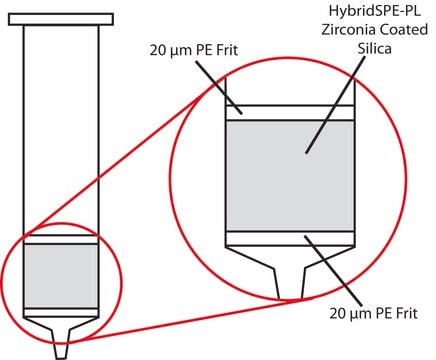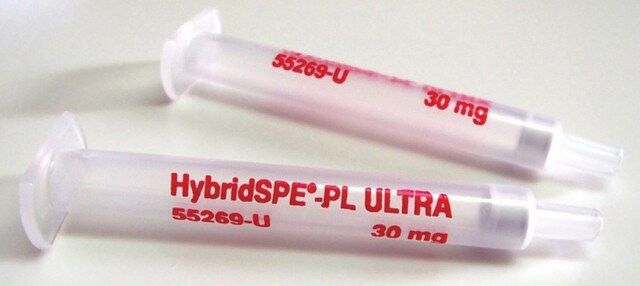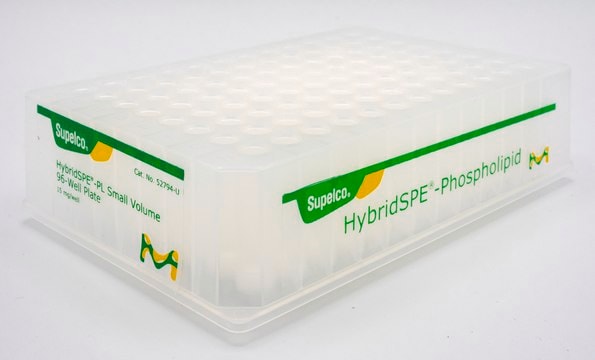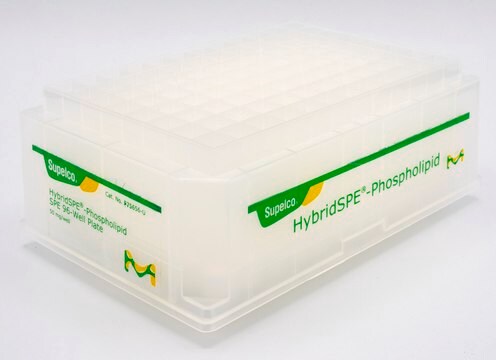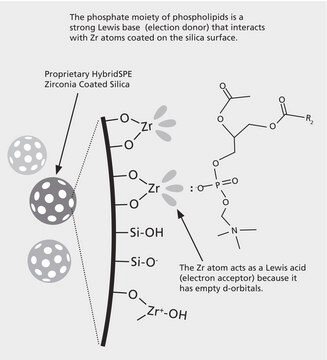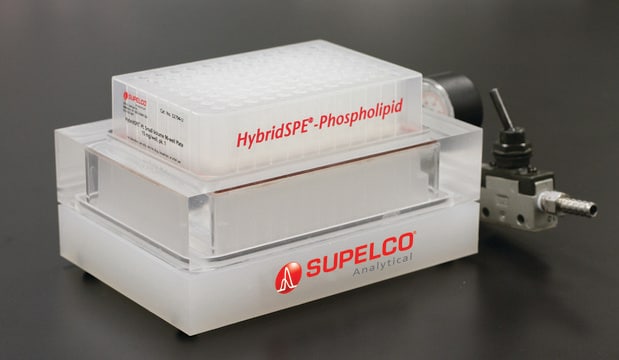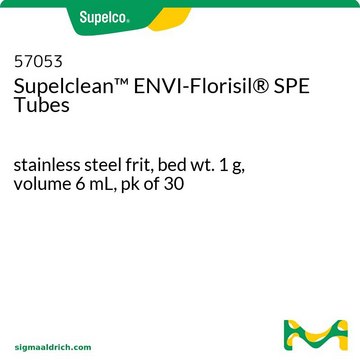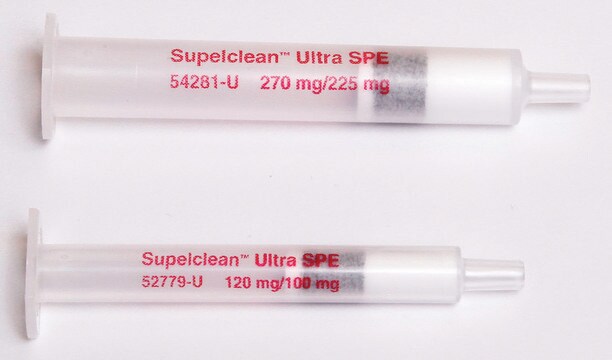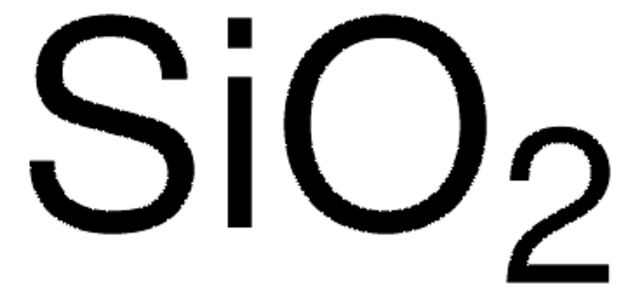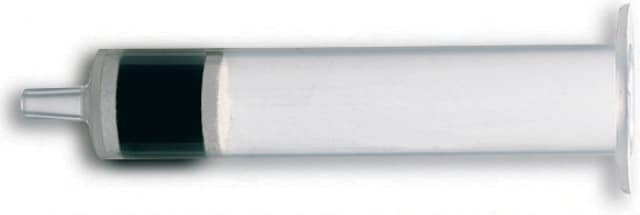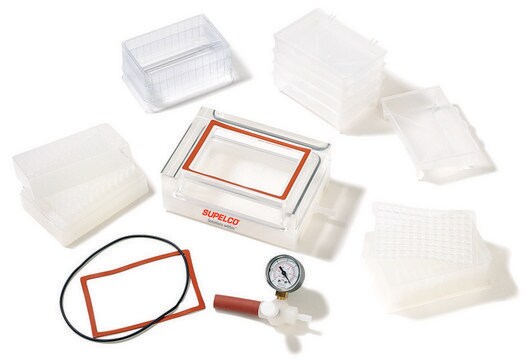Wichtige Dokumente
55267-U
HybridSPE®-Phospholipid solid phase extraction (SPE) Cartridge
Cartridge, bed wt. 500 mg, volume 6 mL, pk of 30
Synonym(e):
HybridSPE (phospholipid and protein removal) 96-well plate, 15 mg
About This Item
Empfohlene Produkte
Produktbezeichnung
HybridSPE®-Phospholipid, Cartridge, bed wt. 500 mg, volume 6 mL, pk of 30
Materialien
PE frit (20/40 μm)
polypropylene hardware
Qualitätsniveau
Produktlinie
HybridSPE®
Zusammensetzung
bed wt., 500 mg
Verpackung
pk of 30
Methode(n)
solid phase extraction (SPE): suitable
Volumen
6 mL
Aktive Matrixgruppe
zirconia-based phase
Suchen Sie nach ähnlichen Produkten? Aufrufen Leitfaden zum Produktvergleich
Allgemeine Beschreibung
Die „In-Well“- und „In-Cartridge“-Fällungsmethoden sind für die 96-Well-Version von HybridSPE-Phospholipid und die Kartusche von HybridSPE-Phospholipid Ultra verfügbar. Dabei wird zunächst biologisches Plasma oder Serum auf die Mikrotiterplatte bzw. in die Kartusche gegeben und dann gesäuertes Acetonitril, das Fällungsmittel. Nach kurzem Mischen/Vortexen wird Vakuum angelegt. Da die Versionen 96-Well und Ultra-Kartusche zahlreiche hydrophobe Filter/Fritten mit geringer Porosität enthalten, funktioniert der gepackte Filter bzw. die gepackte Fritte als Tiefenfilter und ermöglicht so während der Extraktion die Entfernung von sowohl Phospholipiden als auch gefällten Proteinen. Die standardmäßigen HybridSPE-Phospholipid-Kartuschen erfordern eine „Off-line“-Fällung.
Anwendung
- Rapid analysis of 65 pharmaceuticals and 7 personal care products in plasma and whole-body tissue samples of fish using acidic extraction, zirconia-coated silica cleanup, and liquid chromatography-tandem mass spectrometry.: This study presents a method incorporating HybridSPE-Phospholipid for efficient cleanup in the analysis of various substances in biological matrices, showcasing its application in environmental toxicology (Tanoue et al., 2020).
- Multi LC-MS/MS and LC-HRMS Methods for Determination of 24 Mycotoxins including Major Phase I and II Biomarker Metabolites in Biological Matrices from Pigs and Broiler Chickens.: Demonstrates the use of HybridSPE-Phospholipid in multi-residue mycotoxin analysis, enhancing the detection capabilities in complex sample matrices (Lauwers et al., 2019).
- Liquid chromatography mass spectrometry determination of perfluoroalkyl acids in environmental solid extracts after phospholipid removal and on-line turbulent flow chromatography purification.: Explores the effectiveness of HybridSPE-Phospholipid in removing interfering substances from environmental samples, aiding in the accurate analysis of perfluoroalkyl substances (Mazzoni et al., 2016).
- Development and validation of a liquid chromatography-tandem mass spectrometry method for the quantitative determination of gamithromycin in animal plasma, lung tissue and pulmonary epithelial lining fluid.: Illustrates the adaptability of HybridSPE-Phospholipid in veterinary medicine for quantifying antibiotics, ensuring precision in therapeutic monitoring (De Baere et al., 2015).
Leistungsmerkmale und Vorteile
- Vereint die Einfachheit der Proteinfällung mit der Selektivität der Festphasenextraktion (SPE) durch die gezielte Entfernung von Phospholipiden
- Reduziert die Ionenunterdrückung durch vollständige Entfernung der Phospholipide und gefällten Proteine
- Zwei- bis dreistufige generische Methode
- Geringe bis keine Methodenentwicklung
- Als 96-Well-Platten und 1 mL große Kartuschen erhältlich
Rechtliche Hinweise
Ähnliches Produkt
Lagerklassenschlüssel
11 - Combustible Solids
WGK
WGK 3
Flammpunkt (°F)
Not applicable
Flammpunkt (°C)
Not applicable
Hier finden Sie alle aktuellen Versionen:
Besitzen Sie dieses Produkt bereits?
In der Dokumentenbibliothek finden Sie die Dokumentation zu den Produkten, die Sie kürzlich erworben haben.
Kunden haben sich ebenfalls angesehen
Artikel
This Sigma-Aldrich article continues to detail new methodology for the analysis of Vitamin D metabolites using HybridSPE-Phospholipid technology.
We are presenting an article focusing on ion-suppression and phospholipid contamination and some of their major causes and difficulties.
This Sigma-Aldrich article discusses how the HybridSPE-Phospholipid Technology works and how the phospholipids are removed.
Protokolle
A simple method to enrich phospholipids from plasma samples, involving a HybridSPE-PPT 96-well plate that both retains phospholipids and removes precipitated proteins.
Unser Team von Wissenschaftlern verfügt über Erfahrung in allen Forschungsbereichen einschließlich Life Science, Materialwissenschaften, chemischer Synthese, Chromatographie, Analytik und vielen mehr..
Setzen Sie sich mit dem technischen Dienst in Verbindung.